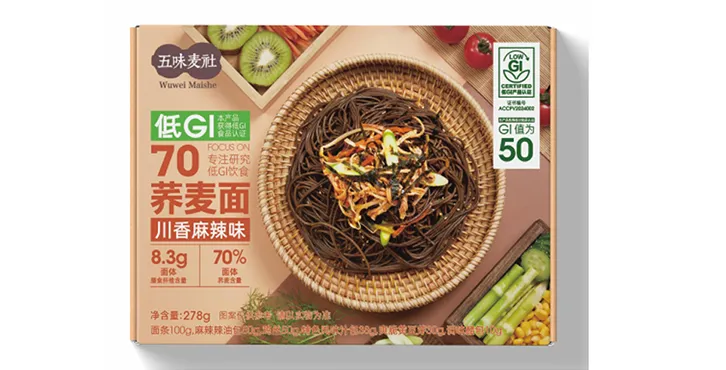difference between udon and soba
The Difference Between Udon and Soba A Culinary Exploration
When it comes to Japanese cuisine, few dishes command the respect and admiration of both locals and global food enthusiasts like udon and soba. These two types of noodles not only represent a significant part of Japan’s culinary heritage but also showcase the country’s diverse ingredients, preparation methods, and regional variations. While they may appear similar to the untrained eye, udon and soba are distinctly different in terms of ingredients, texture, flavor, and culinary uses. In this article, we will delve into the fascinating world of these two noodle types and explore what sets them apart.
Ingredients and Preparation
The primary difference between udon and soba lies in their main ingredients. Udon noodles are typically made from wheat flour, water, and salt, giving them a chewy and thick texture. The dough for udon is kneaded and rolled out before being cut into thick strands, which can vary in width but are generally about 6 to 8 millimeters wide. This thickness allows the noodles to absorb broths and sauces well, making them a perfect match for hearty dishes.
On the other hand, soba noodles are made from buckwheat flour, often mixed with a small percentage of wheat flour to enhance their elasticity. Buckwheat is a gluten-free grain, which contributes to the distinct earthy flavor and darker color of soba noodles. Typically thinner than udon, soba noodles are about 1 to 2 millimeters wide. They are also prepared differently; soba is usually rolled out into thin sheets before being cut into long, narrow strands, resulting in a delicate noodle that cooks quickly.
Texture and Flavor Profile
In terms of texture, udon noodles are known for their thick, chewy consistency, which provides a satisfying bite. Their flavor is relatively neutral, allowing them to effectively absorb the flavors of the dishes they accompany, whether it’s a rich broth or a tangy dipping sauce. Udon is often served hot in soups or stir-fried, but it can also be enjoyed chilled, particularly in summer months.
Soba noodles, conversely, have a slightly nutty flavor owing to the buckwheat. Their thinner texture offers a more delicate mouthfeel, making them suitable for a variety of dishes. Soba is versatile and can be served hot or cold, often garnished with a variety of toppings such as scallions, tempura, or nori. Cold soba, known as zaru soba, is especially popular in hot weather, served with a dipping sauce called soba tsuyu that highlights its unique flavor.
difference between udon and soba

Culinary Applications
Culinary applications further distinguish udon from soba. Udon is commonly featured in hearty dishes like “kake udon,” where the noodles are served in a warm, flavorful broth made from dashi, soy sauce, and mirin, garnished with green onions, tempura, or kamaboko (fish cake). Udon can also be stir-fried (yaki udon), where the chewy noodles are tossed with vegetables and proteins.
Soba, on the other hand, is often served in lighter dishes. It can be enjoyed warm as soba noodle soup or served cold as zaru soba, accompanied by a flavorful dipping sauce. The freshness of soba makes it an excellent pairing with seasonal ingredients. Soba is also associated with healthy eating due to its buckwheat content, which is rich in nutrients and has beneficial properties.
Cultural Significance
Both udon and soba noodles carry cultural significance in Japan. Soba is often eaten during New Year’s celebrations, symbolizing longevity and prosperity. Udon, with its heartiness and warmth, is a comforting dish for many during colder months. Regional variations also reflect local ingredients and cooking methods, adding depth to the cultural landscape of these beloved noodles.
Conclusion
In conclusion, while udon and soba noodles both play important roles in Japanese cuisine, they are fundamentally different in ingredients, texture, flavor, and culinary uses. Udon’s thick and chewy texture pairs beautifully with rich broths, while soba’s delicate and nutty flavor complements a variety of toppings and sauces. Each noodle embodies a unique cultural significance and showcases the diverse culinary traditions of Japan. Whether you prefer the heartiness of udon or the lightness of soba, these noodles offer a delicious culinary experience that reflects the artistry of Japanese cuisine.
-
The Wholesome Delight of Organic NoodlesNewsAug.15,2025
-
The Vibrant Delight of Spinach NoodlesNewsAug.15,2025
-
Savor the Spicy Delight of Hot Pot NoodlesNewsAug.15,2025
-
Savor the Chill with Irresistible Cold NoodlesNewsAug.15,2025
-
Indulge in the Authentic Delight of Udon NoodlesNewsAug.15,2025
-
Dive into the Delicious World of Cart NoodlesNewsAug.15,2025
-
Unlock the Delicious Potential of Yam NoodlesNewsAug.11,2025
Browse qua the following product new the we







